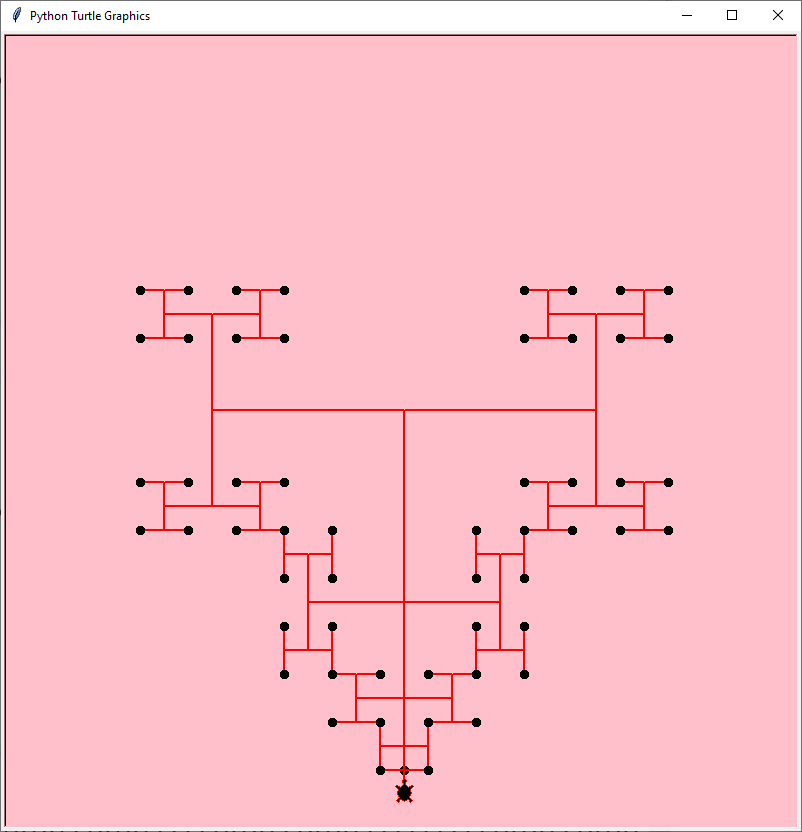La grammatica ha 2 variabili, 2 costanti, un assioma, 2 regole di produzione
- variabili: 0, 1
- costanti: [, ]
- assioma: 0
- regole di produzione:
0 → 1[0]01 → 11
Ecco i 6 alberi successivi per ANGOLO=45°
| Livello | Stringa | Lung. | Risultato |
|---|---|---|---|
| 1 | 0 | 1 | 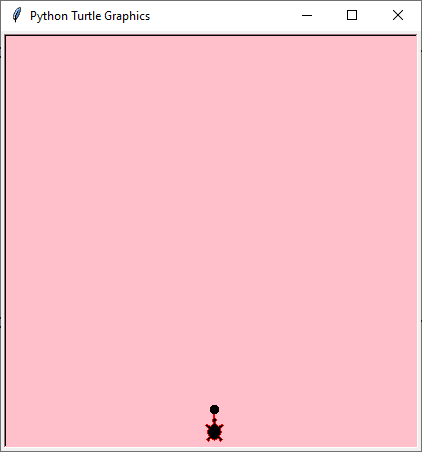 |
| 2 | 1[0]0 | 5 | 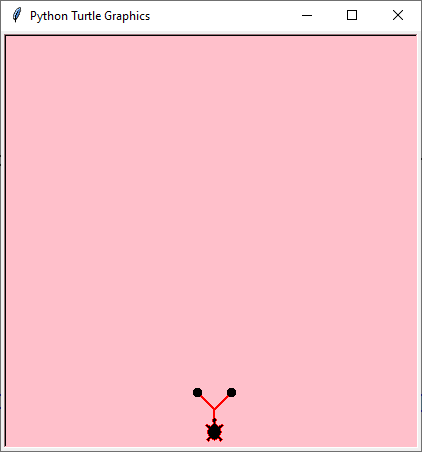 |
| 3 | 11[1[0]0]1[0]0 | 14 | 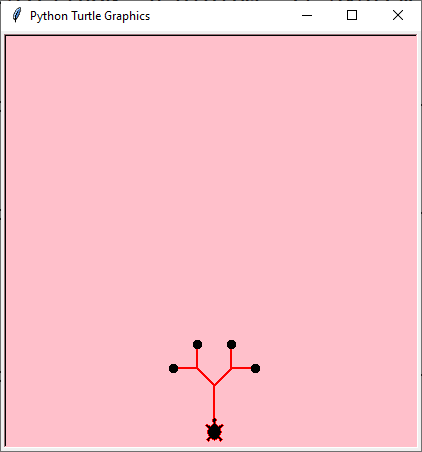 |
| 4 | 1111[11[1[0]0]1[0]0]11[1[0]0]1[0]0 | 34 | 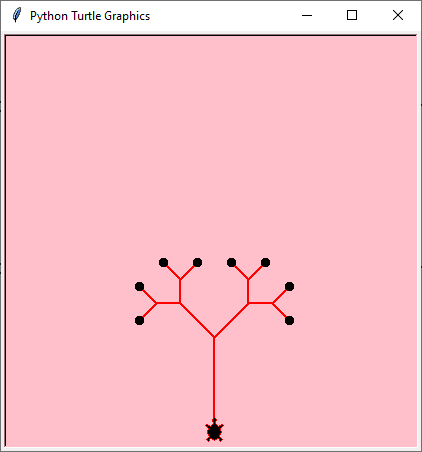 |
| 5 | 11111111[1111[11[1[0]0]1[0]0]11[1[0]0]1[0]0]1111[11[1[0]0]1[0]0]11[1[0]0]1[0]0 | 78 | 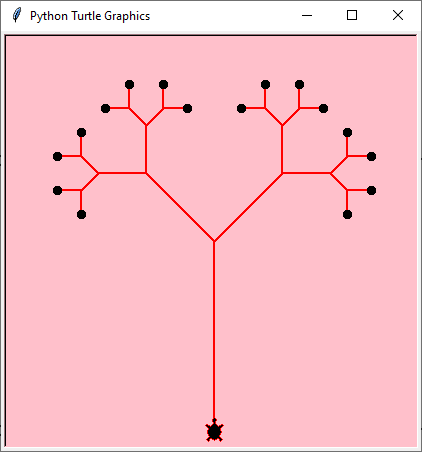 |
Al livello 6 la stringa è lunga 174 caratteri
1111111111111111[11111111[1111[11[1[0]0]1[0]0]11[1[0]0]1[0]0]1111[11[1[0]0]1[0]0]11[1[0]0]1[0]0]11111111[1111[11[1[0]0][0]0]11[1[0]0]1[0]0]1111[11[1[0]0]1[0]0]11[1[0]0]1[0]0
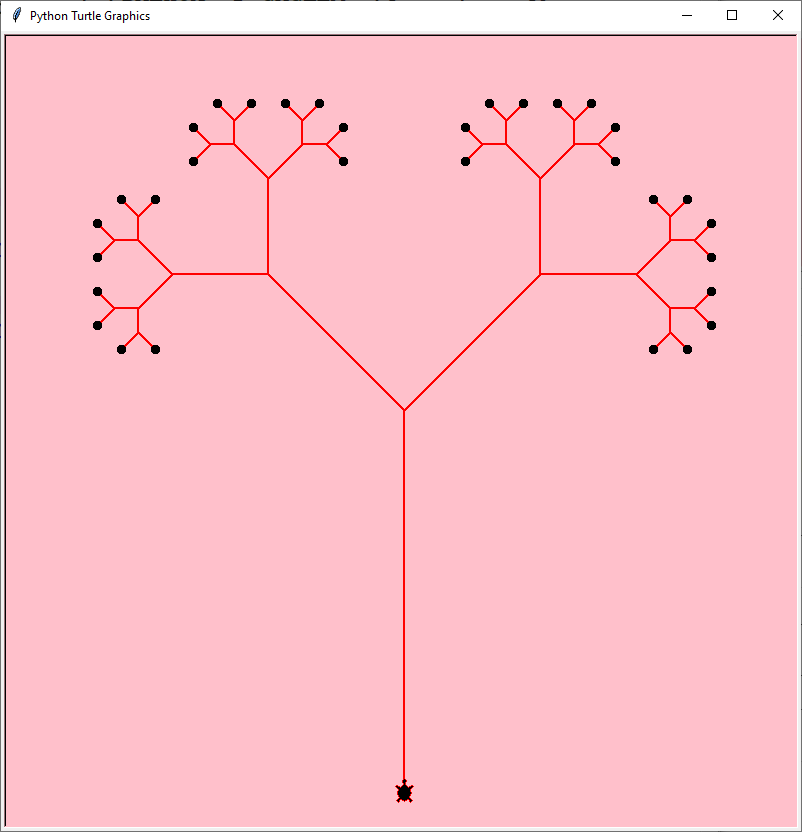
Ecco le 6 immagini insieme!
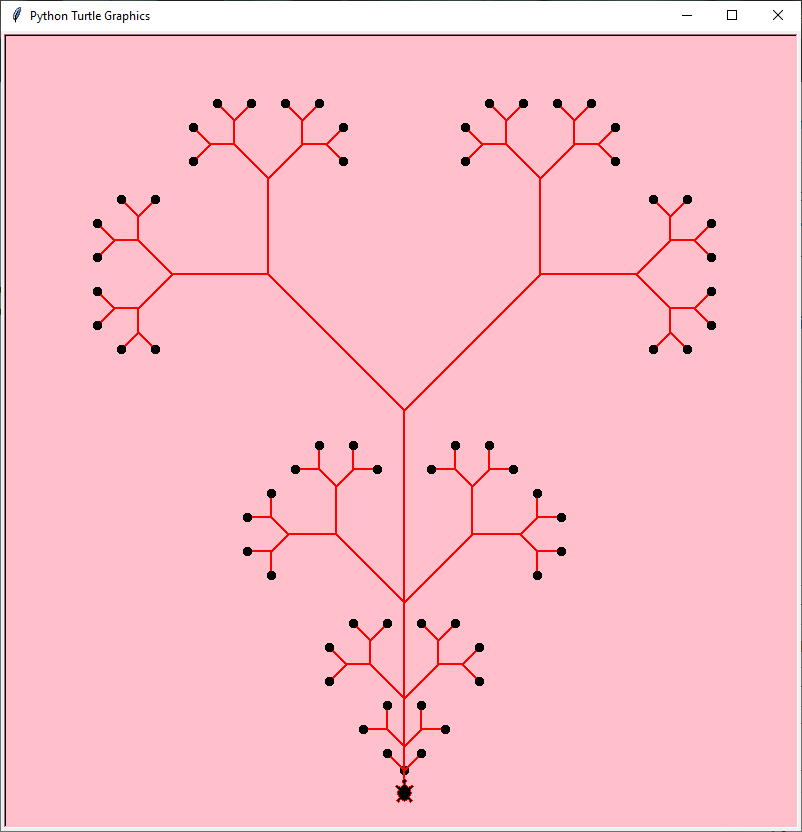
import time
import turtle
#-----------------------------------------------
WIDTH =800 # Dimensione finestra
HEIGHT =800 # ...
LIVELLI=6 # Numero livelli
#-----------------------------------------------
W =0 # Posizione iniziale
H =-HEIGHT*0.45 # ...
DIR =90 # Direzione iniziale
ANGOLO =45 # Angolo a sinistra
#----------------------------------------------- Passo della tartaruga
SIZE = HEIGHT*0.9/(2**(LIVELLI-1))
#-----------------------------------------------
R =['0']
REGOLE={'0':'1[0]0', '1':'11', '[':'[', ']':']'}
#-----------------------------------------------
def trasforma(R):
R2=[]
for x in R:
R2 += REGOLE[x]
return R2
#-----------------------------------------------
def disegna(R):
turtle.setup(width=WIDTH, height=HEIGHT)
turtle.bgcolor('pink')
turtle.pencolor("red")
turtle.pensize(3)
turtle.penup()
turtle.shape('turtle')
turtle.speed(0)
turtle.setposition(W,H)
turtle.setheading(DIR)
STACK=[]
for x in R:
if(x == '0'):
turtle.pendown()
turtle.forward(SIZE)
turtle.dot(10, 'black')
elif(x == '1'):
turtle.pendown()
turtle.forward(SIZE)
elif(x == '['):
p=turtle.position()
h=turtle.heading()
STACK.append(p)
STACK.append(h)
turtle.left(ANGOLO)
elif(x == ']'):
h=STACK.pop()
p=STACK.pop()
turtle.penup()
turtle.setposition(p)
turtle.setheading(h)
turtle.right(ANGOLO)
turtle.penup()
turtle.setposition(W,H)
turtle.setheading(DIR)
#-----------------------------------------------
for j in range(LIVELLI):
print(len(R), '\t', str().join(R), '\n')
disegna(R)
R=trasforma(R)Al variare dell’angolo si ottengono le figure seguenti
ANGOLO=18°
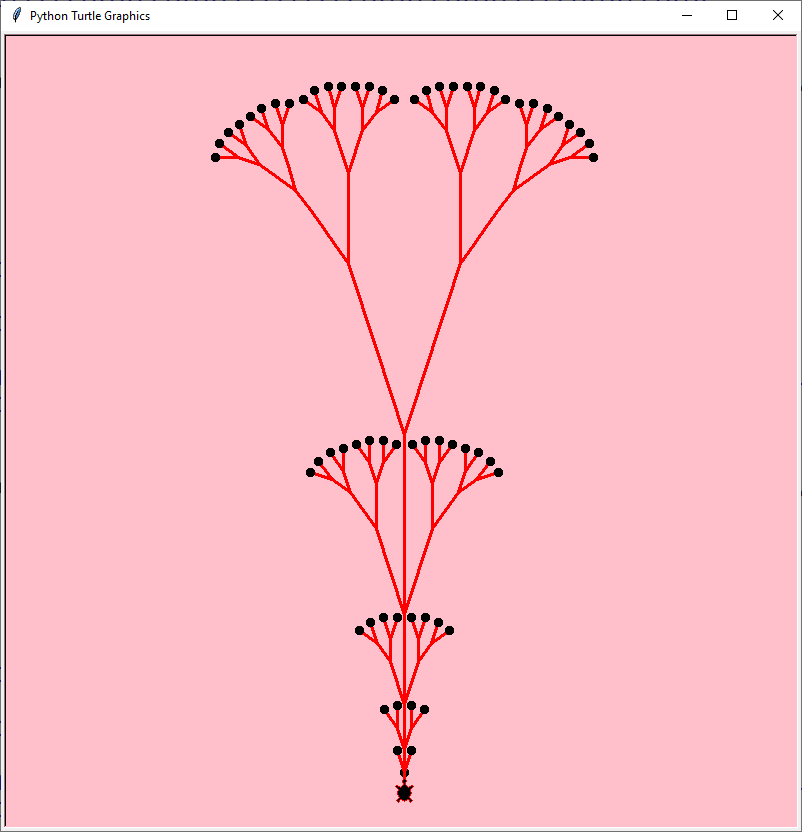
ANGOLO=36°
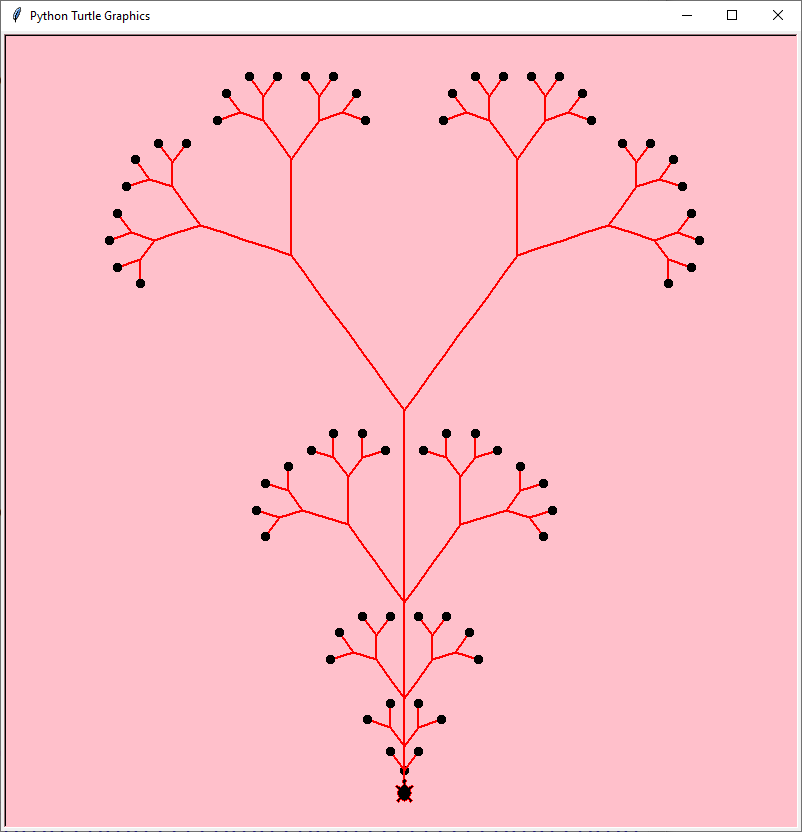
ANGOLO=45°

ANGOLO=60°
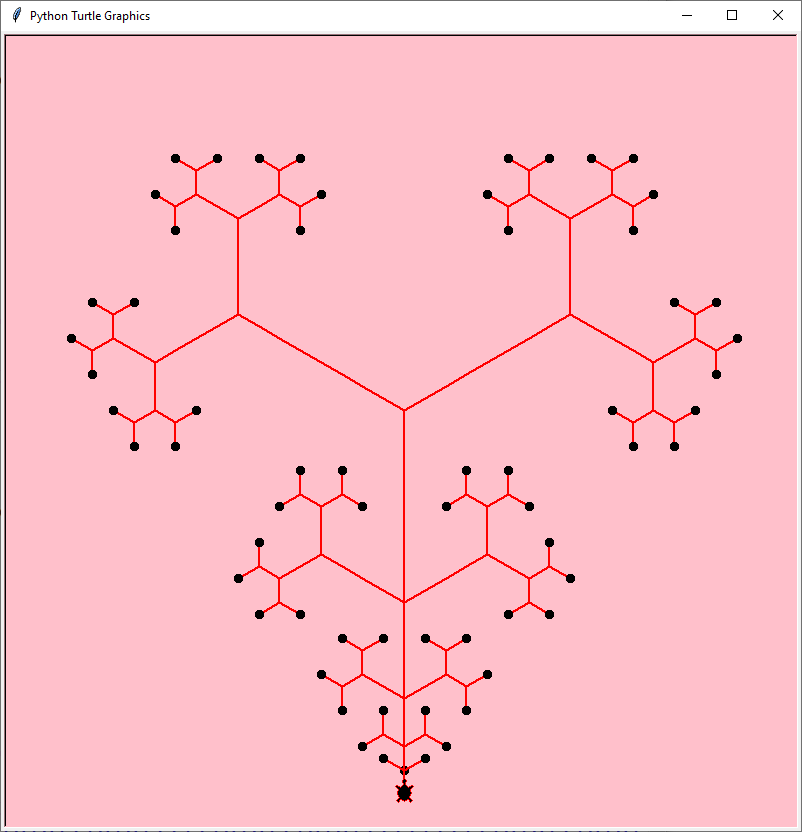
ANGOLO=90°
